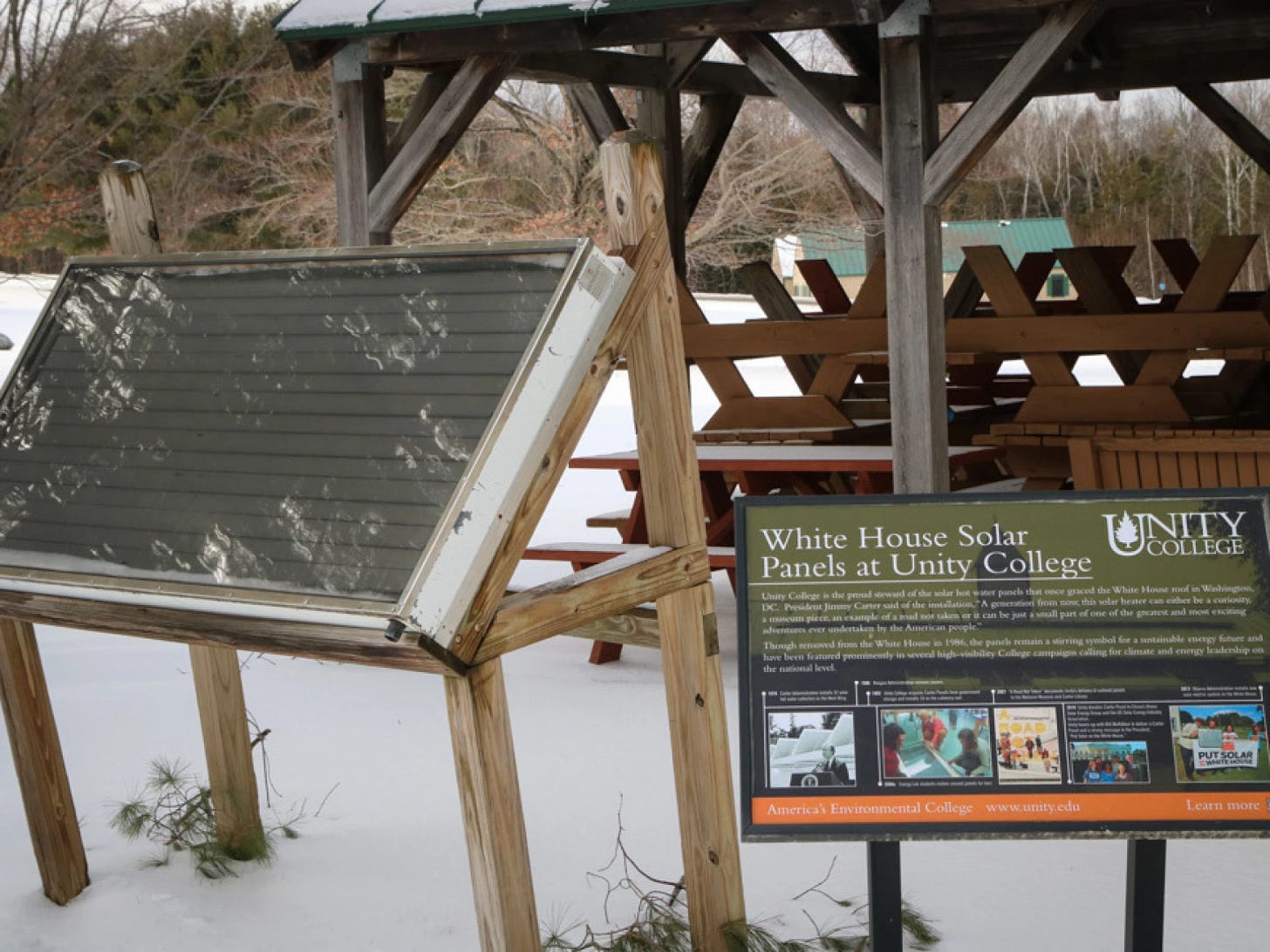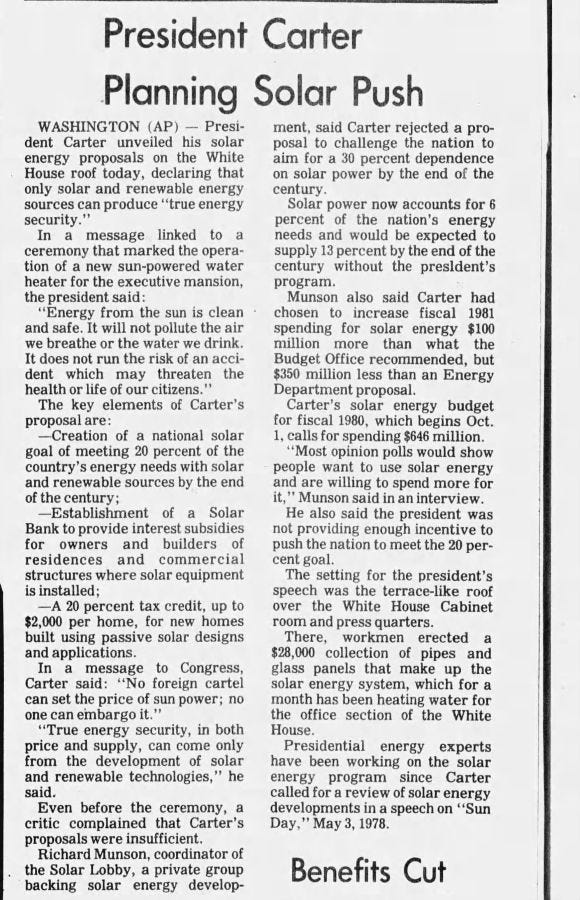1 Week, 7 Stories #57
Stopping the Starlink satellite train is getting tougher everyday.
Every edition features 7 stories from the past week. I’ll draw on my background in media, journalism, agriculture, biotech, and renewable energy to come up with an interesting selection and to offer some context.
Playing some catchup from the end of the off the year and to ease into 2025, starting off with the cute and cuddly and perhaps endangered koala bear.
Koalas are in trouble because of the spread of chlamydia, stress from droughts and wildfires, and an increasing number of traumatic injuries from cars and dogs according to this story from the New York Times. On the eastern seaboard of Australia the animal we tend to think of as synonymous with the land down under is officially listed as endangered which the Australian Koala Foundation says is almost meaningless because the koala habitat is not protected. The foundation is one of several wildlife groups which says that chlamydia is definitely a problem, but that habitat pressure is becoming a much greater issue.
Chlamydia is common in the animal world and in the case of the koala spreads through sexual contact and from mothers to their babies. It is a bacterial infection which can lead to urinary tract infections, blindness, and infertility. Antibiotics are an effective treatment, but that wreaks havoc on the gut making it difficult for the koala to digest its main food source – eucalyptus leaves.
There is research on vaccines to protect against chlamydia and a couple of them have had good success but as a BBC story pointed out this week, it may not be in time to stop more koala populations becoming endangered.
I grew up during a time when smoking still had a cool factor (I evaded the temptation so wasn’t really cool) and though it has lost that old suave appeal, it is neither gone nor forgotten. Considering that smoking goes back thousands of years, we have made pretty good progress in trying to convince people to kick the habit.
New research commissioned by the United Kingdom Department for Health and Social Care was released just in time for smokers to add kicking the habit to their list of resolutions for 2025. The research says that ending a 10-cigarette a day habit will have paid off by January 8th by adding one day more to their life expectancy. The research updated previous research (from 2000) that underestimated how much of a smoker’s life is lost from the habit. The new numbers say that every cigarette shortens your life by 20 minutes. One researcher from University College London said that means the average smoker will lose about a decade of their life. Some of the conclusions were drawn from the British Doctors Study which began in 1951 and has surveyed doctors and smokers with regular check-ins and questionnaires.
About six million adults or 12% of the population in the United Kingdom are smokers and the same percentage holds true here according to Statistics Canada numbers. Also in keeping with the UK numbers, more men than women smoke and older Canadian are more likely to smoke.
Quit smoking, live long and prosper in 2025.
Jimmy Carter died earlier this week, and I won’t try to re-hash much of what you have already heard, except to point out his stand on environmental issues during his term in office from 1977 to 1981.
On June 20, 1979, President Carter officially unveiled solar panels on the roof of the White House.
It was during an energy crisis in the U.S. following a cut in oil production by Iran from 5.8 million barrels a day to a mere 445,000 a day which drove up prices, pushed down supply, and resulted in panic buying.
Not everyone embraces cutting back on fossil fuel use today, but in 1979 the suggestion was almost unheard of, yet Carter said the world needs to waste less energy and use renewable energy to replace fossil fuel supplies. He went so far as to set a goal of 20% of all the energy the country used would be renewable by the end of the 20th century. In 2024 the US number sits barely above that and globally falls just under it. Canda lags behind at about 17%.
Even from day 1 of his presidency he had an eye on solar with a solar-heated reviewing stand for his inauguration. The all-metal stand (he didn’t want wood that would end up in a landfill) was recycled as a bandstand in Atlanta Georgia but has since ‘disappeared’. The White House solar panels fared somewhat better. President Ronald Reagan had them removed and they were used on a roof at Unity College. One has been preserved as an historical marker on the campus.
The incoming administration is not likely to have such a green eye on the future, but a Reuters story suggests that while there may be a slowdown in renewables it will not be a full stop. Renewables may even hold their own, because while Trump is from the school of “drill, baby, drill”, his pick for “energy czar” Doug Burgum, is an all-of-the-above choice who supports renewables and carbon capture.

Elon Musk is back in the news to end 2024 and not because of his role as the seemingly U.S. Co-President. He is launching into 2025 as his newfound political power is boosting his Starlink service and wearing down the opposition according to Bloomberg. Starlink uses a constellation of low (550km) Earth orbit satellites to deliver the internet to underserved countries, remote communities, or as the home page of Starlink illustrates, to your yacht.
Starlink cannot operate in some countries because it would be in the way of government telecommunications, has been criticized for opening its service to terrorist organizations, has military and security implications, and in the case of countries such as South Africa, the company does not want follow rules for local or national investment and equity.
Astronomers also have a string of concerns. First there is the sheer number of satellites. There are more than 6,000 Starlink satellites in orbit today and plans for tens of thousands more according to AAAS Science. It will not be long before a wide-viewing telescope will not be able to look at a piece of sky without a Starlink satellite in the picture. Add in other private companies using Musk’s SpaceX launch capabilities and researchers say that by the end of the decade there could be 100,000 satellites whirling around the planet.
Each of those satellites emits radio waves which interfere with radio astronomy and an open access letter in Astronomy & Astrophysics says the “unintended electromagnetic radiation” from the latest Starlink satellites is worse.
There is no question that Starlink is a valuable and innovative piece of communications kit, but Space.com recently questioned whether it is a grand innovation or a menace. Already the article says, Starlink is considered the greatest risk for orbital collisions. Sooner or later all those satellites are going to come down and burn up in the atmosphere. A Canadian researcher said in a 2021 open access paper that the burn-up emissions will add a significant amount ozone depleting alumina into the atmosphere. As this is new territory it is difficult to say what the long-term effects will be.
Which brings us back to Musk and his out-sized influence on the planet. The Canadian paper suggests that much of the satellite activity violates parts of the 1967 Outer Space Treaty and there have been numerous calls for more co-operation between countries and regulatory bodies.
As the Bloomberg story points out however, Starlink and Musk will not let regulatory rules or politics get in the way. His bromance with incoming President Trump is already adding to his wealth and influence and hurdles are melting away.
Look up in the night sky for a few nights and you will likely see a Starlink satellite train looking down on you. Even a decent smartphone will snap a picture to remind you of what lies ahead in 2025.

One of the stories I covered early in my CBC career was about knives. After a knife attack in Calgary, I happened to be walking through a mall and passed a knife shop selling some pretty nasty looking sharp edge knives, small swords, and cleaves alongside the usual kitchen-variety tools. The on-the-street and law enforcement interviews we did agreed that getting hold of a dangerous weapon was far too easy.
There have been some changes in the law since then, but in 2023 homicides from stabbing were number 2 in Canada, close behind shootings. Of the 778 homicides that year, 234 were stabbings.
This week new laws governing the sale of long-blade weapons such as machetes came into effect in Manitoba. For a start, retailers have to store them in a manner that makes it difficult for shoppers to access without assistance. They can only be sold to adults and photo ID is required. Back when I did my story ‘smash and grab’ was easy and anyone could buy a cleaver or machete along with a new butter or steak knife. The Long-Bladed Weapon Control Act also requires the seller to record the purchaser’s address and other relevant information. The act also notes (unfortunately) that the rules do not apply to online retailers sending knives to Manitoba addresses.
One of the reasons Manitoba may have had for taking on this new law could be a rash of knife crimes that involve machetes in particular. The Winnipeg Free Press said that in 2023 there were 1,637 violent crimes involving knives - 28% more than the 5-year average.
The C2C Journal has a good rundown of the problem in Manitoba and the difficulty in implementing and enforcing knife laws in most jurisdictions.
Two self guided vehicles met with a bit of a crunch on December 27th. It had to happen eventually and it certainly won’t be the last time. (and certainly fodder for late night talk and comedy sketches!)
The bigger vehicle was a Waymo taxi and it hit a Serve Robotics vehicle as it was crossing the street in Los Angeles. Serve Robotics launched its autonomous sidewalk delivery fleet in January 2022, and is one of many similar services around the world. The company is cagey about its actual numbers but has announced a contract with partners to deploy 2,000 more robots in U.S. markets. Waymo has close to a thousand robocabs puttering around San Francisco, Phoenix, Los Angeles, and Austin. Head-to-head contact was inevitable.
What is also inevitable are people having close encounters with self-driving vehicles. The first recorded pedestrian fatality from a vehicle goes back to London in 1896. Canada’s first ever pedestrian fatality was in 1905, the first in the U.S. was in 1899, and finally in March of 2018 an Uber self-driving test vehicle killed a pedestrian in Tempe, Arizona. The vehicle was in autonomous mode, but there was a backup driver. He was charged with felony negligent homicide pleaded guilty and accepted a plea agreement.
Generally, the driverless vehicles are proving to be safe, but it will be some time before a final verdict because there are so few on the roads in a very limited number of cities. An equally important question to be addressed will be the question of liability in accidents involving robo-whatevers. Right now, it appears that the manufacturer, software company, operator, and other drivers or pedestrians will find themselves on the wrong end of a lawsuit. No fault insurance may find a few more advocates!
I’ll close this edition with a great big, “I didn’t know that”. The bald eagle is now the official bird of the United States. What I didn’t realise was that until Christmas Eve, the U.S. had no official bird at all.
S.4610 – A bill to amend title 36, United States Code, to designate the bald eagle as national bird changed that.
The bird is on the official Great Seal of the U.S, it first appeared on a coin in 1776, and can’t be missed on one-dollar bills. It got a bad rap from Benjamin Franklin who said, “He is a Bird of bad moral Character. He does not get his Living honestly” and then went on to say he preferred the turkey “For the Truth the Turkey is in Comparison a much more respectable Bird, and withal a true original Native of America”.
Maybe because it lacked official status the big bird has had a tough go of it for many years. The American Eagle Foundation says it has gone from a high of 100,000 nesting Bald Eagles in 1782 to a low of 417 known nesting pairs in 1963. That wild ride has stabilized at about 316,700 individuals, which includes 71,467 occupied nests according to the U.S, Fish & Wildlife Service.
House and Senate politicians from both parties in Minnesota (home to the largest nesting population of bald eagles) started the big push and once it made it through Congress, it was ready to be signed.
No one could be happier than this man from Minnesota who has a collection of 40,000 bald eagle related objects and tipped off Congress that the bald eagle lacked official status. A great way for him and for the eagle to end 2024 and kick off 2025.
Read, comment, subscribe, and share this newsletter.
I’m available for contract and freelance work with not-for-profits and charities. With 40 years of experience behind me and lots of time ahead of me, I’m here to help you make a difference in your media relations, public relations, and general communications needs.



